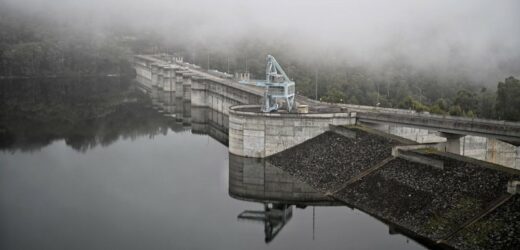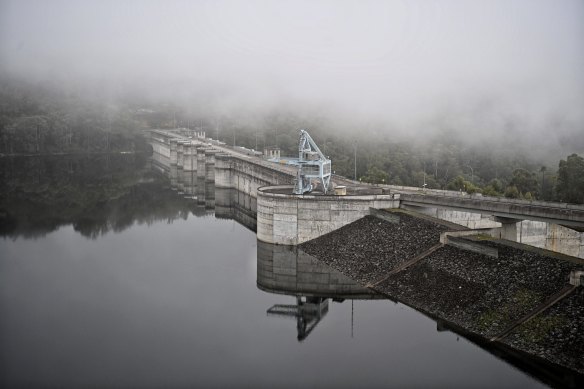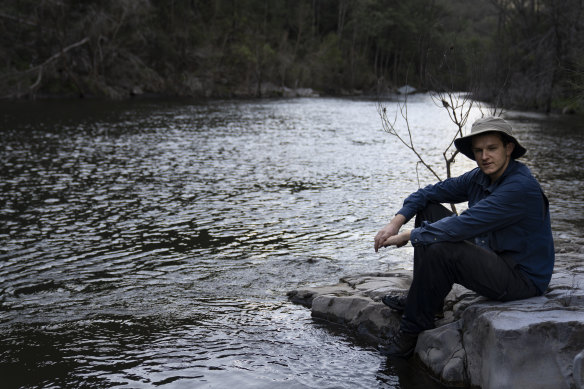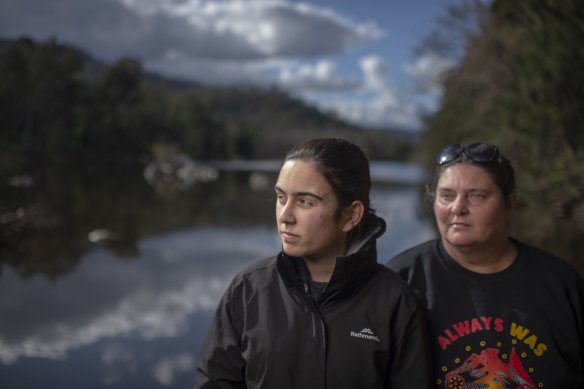Save articles for later
Add articles to your saved list and come back to them any time.
The controversial raising of Warragamba Dam’s wall is dead in the water after the NSW government decided not to proceed with the project due to huge costs and environmental and heritage concerns.
The news has been welcomed by campaigners including Indigenous communities and environmental groups who have opposed the project for almost a decade, whose position was bolstered by an objection from the United Nations Educational, Scientific and Cultural Organisation (UNESCO).
The NSW government has confirmed it will shelve the controversial raising of the Warragamba Dam wall.Credit: Nick Moir
NSW Environment Minister Penny Sharpe said the project would cost more than $1 billion and impact a portion of the Blue Mountains World Heritage Area that sits around the dam’s huge Lake Burragorang reservoir.
“We don’t think it solves the problem that it says it [will],” she said of raising the wall. “With my environment minister hat on, as a World Heritage Area it should be given the highest level of protection. I am pleased that will be saved. I am happy in relation to habitat for endangered species.”
She added the area also held significant cultural importance to Indigenous people. “We’ve been clear about what our position is on that,” Sharpe said.
The project, which has been under way for several years, would have resulted in the dam wall being raised by 14 metres, allowing for a flood mitigation zone above the dam’s current capacity. It would have been able to hold an extra trillion litres and possibly reduce flood damage by 75 per cent.
This would have allowed floodwaters coming through the catchment to be released in a controlled way, delaying and reducing the flood peak for thousands of residents in the Hawkesbury-Nepean region.
Sharpe’s announcement follows a commitment NSW Premier Chris Minns made before the election that a Labor government would instead lower the maximum water level, creating a flood mitigation zone without needing to raise the dam wall.
At the time of the election, he indicated the government would invest $225 million in updating existing infrastructure to improve evacuation routes, as well as increasing the number of levees.
Long-term campaigner Harry Burkitt, who has led the campaign against raising the dam, said it had been an eight-year fight to see the project stopped.
“Lots of blood, sweat and tears have been poured into this win, and it’s a great credit to all the people out there who have supported the campaign – chief amongst them Chris Minns,” he said.
Harry Burkitt, who has led the campaign against the Warragamba Dam wall raising, sits by the Kowmung River.Credit: Wolter Peeters
“We look forward to seeing [Water] Minister [Rose] Jackson officially withdrawing the development application for the dam raising in the coming weeks and embark on new flood mitigation measures in the Hawkesbury-Nepean Valley.
“Importantly, the Labor government must continue its strong legacy in protecting the Blue Mountains and re-enact legislation repealed by the Liberals to prohibit the flooding of the Blue Mountains National Park.”
Gundungurra traditional owner Kazan Brown said the news was a welcome relief.
“It is awesome,” she said. “We were pretty confident it wasn’t going to go ahead after the election, but this is a big weight off the shoulders. I don’t know what I will do now with my time.”
Gundungurra Traditional Owners Kazan Brown (right) and her daughter Taylor Clarke, on land that would have been inundated by floodwater at Burnt Flat by the raising of the Warragamba Dam Wall. Credit: Wolter Peeters
The previous government considered alternative methods of flood adaptation in the Hawkesbury-Nepean region and found that raising the dam wall was the best option in terms of minimising risk to life, property damage and cost.
Warragamba Dam was never built to be a flood mitigation tool, rather it was designed to cater to Sydney’s growing water needs in 1960. It remains one of the largest domestic water supply dams in the world, storing about 80 per cent of Sydney’s water.
However, when it floods, the Warragamba Dam catchment can contribute as much as 70 per cent of the water to the floodplain of the Hawkesbury-Nepean region. This area has the highest flood exposure in the state.
Water Minister Jackson has been contacted for comment.
The Morning Edition newsletter is our guide to the day’s most important and interesting stories, analysis and insights. Sign up here.
Most Viewed in Environment
From our partners
Source: Read Full Article





